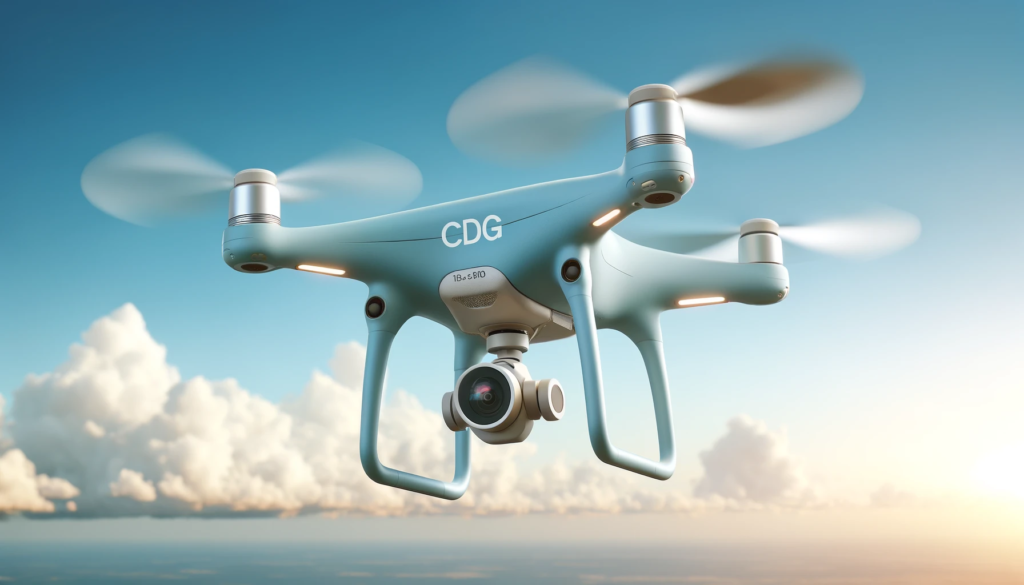Introduction
In the ever-evolving landscape of technological advancements, innovation has become the cornerstone of progress. At CDG, we pride ourselves on being at the forefront of this evolution, utilizing cutting-edge drone technology to revolutionize the way inspections are conducted. One of our premier services, Drone Air Quality Monitoring Inspections, stands as a testament to our commitment to environmental safety and sustainability.
Why Air Quality Monitoring is Crucial:
Air quality is a critical component of environmental health, directly impacting the well-being of both ecosystems and human populations. With the rise of industrialization and urbanization, the need for vigilant monitoring of air quality has never been more pressing. Poor air quality not only leads to environmental degradation but also poses significant health risks, including respiratory issues, cardiovascular diseases, and even premature death.
Traditional Methods vs. Drone Technology:
Historically, air quality monitoring has relied heavily on stationary monitoring stations, which provide localized data but often fail to capture the full picture due to their limited range and accessibility. Manual inspections, while effective to some extent, are time-consuming, labor-intensive, and prone to human error.
Enter drone technology – a game-changer in the realm of air quality monitoring. Drones equipped with state-of-the-art sensors can effortlessly navigate through even the most inaccessible areas, capturing real-time data with unparalleled accuracy and efficiency. This not only expands the scope of monitoring but also enhances the granularity of data collection, enabling more informed decision-making.
Key Benefits of Drone Air Quality Monitoring Inspections:
Precision and Accuracy:
Drones are equipped with advanced sensors capable of detecting a wide range of air pollutants, including particulate matter, volatile organic compounds (VOCs), nitrogen oxides (NOx), and ozone. This high level of sensitivity ensures that even minor fluctuations in air quality are detected promptly, allowing for timely intervention and mitigation measures.
Cost-Effectiveness:
Traditional air quality monitoring methods often require significant financial investment in infrastructure and manpower. In contrast, drone-based inspections offer a cost-effective alternative, reducing operational expenses associated with manual labor, transportation, and maintenance. This makes it an attractive option for businesses and regulatory agencies looking to optimize their resources without compromising on data quality.
Real-Time Monitoring:
One of the most significant advantages of drone technology is its ability to provide real-time data, enabling stakeholders to monitor air quality dynamics as they unfold. This instantaneous feedback loop facilitates proactive decision-making, allowing for swift response to emerging environmental threats such as industrial emissions, wildfires, and chemical spills.
Accessibility and Versatility:
Unlike traditional monitoring methods that are often constrained by geographical barriers and logistical challenges, drones can access remote or hazardous areas with ease. Whether it’s monitoring air quality in densely populated urban centers, industrial facilities, or natural reserves, drones offer unparalleled versatility and adaptability to diverse environments.
Case Study: Improving Urban Air Quality with Drone Inspections
To illustrate the practical applications of drone air quality monitoring inspections, let’s consider a hypothetical scenario in which a metropolitan area is grappling with rising levels of air pollution. Traditional monitoring stations have provided valuable insights, but their fixed locations limit their ability to capture air quality dynamics across the entire city.
CDG is enlisted to conduct comprehensive drone inspections to supplement existing monitoring efforts. Equipped with cutting-edge sensors, our drones traverse the urban landscape, collecting real-time data on key air pollutants such as particulate matter, carbon monoxide, and sulfur dioxide.
The data gathered by our drones paints a detailed picture of air quality trends, pinpointing hotspots of pollution and identifying sources of emissions. Armed with this actionable intelligence, city officials can implement targeted interventions such as emission controls, urban planning strategies, and public awareness campaigns to improve air quality and safeguard public health.
Conclusion:
In an age defined by environmental challenges and technological innovation, the marriage of drone technology and air quality monitoring represents a paradigm shift in how we approach environmental stewardship. CDG’s Drone Air Quality Monitoring Inspections offer a glimpse into the future of environmental monitoring, where precision, efficiency, and accessibility converge to create a safer and healthier world for generations to come.
